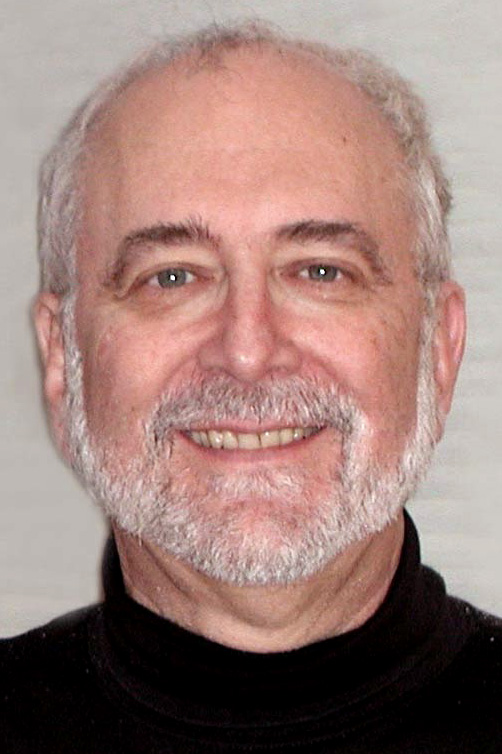

 On July 25th ICANN announced the publication of the Draft Report of the Independent Review of the Trademark Clearinghouse (TMCH). This study was coordinated for ICANN by the Analysis Group, in conjunction with researchers from the Center for Internet and Society at Stanford as well the University of Pennsylvania's Wharton School... while public comments on the draft report will be accepted through September 3rd, this Report was triggered by GAC concerns expressed before the Applicant Guidebook for the new gTLD program was even completed, and is not the work product of a GNSO-created working group and therefore will not directly result in the establishment of any new ICANN policy. more
On July 25th ICANN announced the publication of the Draft Report of the Independent Review of the Trademark Clearinghouse (TMCH). This study was coordinated for ICANN by the Analysis Group, in conjunction with researchers from the Center for Internet and Society at Stanford as well the University of Pennsylvania's Wharton School... while public comments on the draft report will be accepted through September 3rd, this Report was triggered by GAC concerns expressed before the Applicant Guidebook for the new gTLD program was even completed, and is not the work product of a GNSO-created working group and therefore will not directly result in the establishment of any new ICANN policy. more
 U.S. Presidential elections and the resulting Administrations can make an enormous difference on many levels and become profound points of inflection. This reality is certainly starkly visible today. Perhaps for the Internet community as well as the general public, some of the largely unknown events and actions surrounding the Internet and the Clinton team from 25 years ago can provide a basis for engagement over the coming months. more
U.S. Presidential elections and the resulting Administrations can make an enormous difference on many levels and become profound points of inflection. This reality is certainly starkly visible today. Perhaps for the Internet community as well as the general public, some of the largely unknown events and actions surrounding the Internet and the Clinton team from 25 years ago can provide a basis for engagement over the coming months. more
 ICANN has just made USD $135 million from an auction completed today (July 29, 2016) to determine who gets to operate .WEB. The auction was part of ICANN's last resort mechanism, when several parties applied for the same suffix but were unable to resolve this contention by themselves. ICANN has just more than doubled its auction proceeds in one go. more
ICANN has just made USD $135 million from an auction completed today (July 29, 2016) to determine who gets to operate .WEB. The auction was part of ICANN's last resort mechanism, when several parties applied for the same suffix but were unable to resolve this contention by themselves. ICANN has just more than doubled its auction proceeds in one go. more
 Subscribers today expect to be connected at all times with exceptional service quality. For communication service providers operating in urban environments, multi-dwelling units (MDUs) are a big cause for concern. Delivering consistently high WiFi service quality in high-density environments is a challenge. The sheer number of nearby access points, electronics, and outside influences can result in a host of WiFi service quality issues... more
Subscribers today expect to be connected at all times with exceptional service quality. For communication service providers operating in urban environments, multi-dwelling units (MDUs) are a big cause for concern. Delivering consistently high WiFi service quality in high-density environments is a challenge. The sheer number of nearby access points, electronics, and outside influences can result in a host of WiFi service quality issues... more
 Earlier this month, Andrew Allemann wrote a post on notable NameJet sales in which he discusses the sale of PropertyRehab.com for $2,400 as "a perfect example of how wrong some domain registries are on their premium pricing." He mentions that the registry operator for the .rehab new generic top-level domain (new gTLD), has marked property.rehab as a platinum domain name and asks: "Why would someone pay thousands (or tens of thousands) a year for Property.rehab when they could buy PropertyRehab.com for just $2,400?" more
Earlier this month, Andrew Allemann wrote a post on notable NameJet sales in which he discusses the sale of PropertyRehab.com for $2,400 as "a perfect example of how wrong some domain registries are on their premium pricing." He mentions that the registry operator for the .rehab new generic top-level domain (new gTLD), has marked property.rehab as a platinum domain name and asks: "Why would someone pay thousands (or tens of thousands) a year for Property.rehab when they could buy PropertyRehab.com for just $2,400?" more
 When ICANN implemented the Uniform Domain Name Dispute Resolution Policy (UDRP) in 1999, the number of registered domain names were in the low eight digits. Registered domain names passed the first million in 1997. Today, they are in the first third of nine digits, and continuing to grow. In its newly released publication gTLD Marketplace Health Index (Beta) (July 21, 2016) ICANN offers through a couple dozen metrics a picture of the multiple parts that corporately go into making a healthy marketplace. It's "Beta" because the Health Index is a work in progress. more
When ICANN implemented the Uniform Domain Name Dispute Resolution Policy (UDRP) in 1999, the number of registered domain names were in the low eight digits. Registered domain names passed the first million in 1997. Today, they are in the first third of nine digits, and continuing to grow. In its newly released publication gTLD Marketplace Health Index (Beta) (July 21, 2016) ICANN offers through a couple dozen metrics a picture of the multiple parts that corporately go into making a healthy marketplace. It's "Beta" because the Health Index is a work in progress. more
 The world of networking tends to be bistable: we either centralize everything, or we decentralize everything. We started with mainframes, passed through Lotus 123 hidden in corners, then to mini's and middleware, then to laptops, and now to the cloud, to be followed by fog. This particular cycle of centralization/decentralization, however, has produced a series of overlapping changes that are difficult to decipher. You can somehow hear someone arguing about disaggregation and hyperconvergence through the fog -- but just barely. more
The world of networking tends to be bistable: we either centralize everything, or we decentralize everything. We started with mainframes, passed through Lotus 123 hidden in corners, then to mini's and middleware, then to laptops, and now to the cloud, to be followed by fog. This particular cycle of centralization/decentralization, however, has produced a series of overlapping changes that are difficult to decipher. You can somehow hear someone arguing about disaggregation and hyperconvergence through the fog -- but just barely. more
 This week ICANN will auction off .WEB or .WEBS. There are seven live applications for .WEB and one for .WEBS. The string contention process decided that the two names are so similar that they'll only assign one of them, so all eight applications are in one auction... There are some deep pocketed bidders in this round including Google, Donuts, web.com which owns Network Solutions and a lot of other web properties, and Schlund which owns the largest web hoster 1&1. more
This week ICANN will auction off .WEB or .WEBS. There are seven live applications for .WEB and one for .WEBS. The string contention process decided that the two names are so similar that they'll only assign one of them, so all eight applications are in one auction... There are some deep pocketed bidders in this round including Google, Donuts, web.com which owns Network Solutions and a lot of other web properties, and Schlund which owns the largest web hoster 1&1. more
 In the USA the FCC has started the discussion on the next level of telecoms in the wireless market, aimed at making spectrum in bands above 24GHz available for flexible-use of wireless services, including next-generation, or 5G networks and technologies. New technologies such as massive-MIMO are going to make it possible to deliver 'fibre-like' speeds over short distance wireless networks operating in the 24+GHz bands. This will make the technology especially useful for high-speed broadband services in densely populated areas. more
In the USA the FCC has started the discussion on the next level of telecoms in the wireless market, aimed at making spectrum in bands above 24GHz available for flexible-use of wireless services, including next-generation, or 5G networks and technologies. New technologies such as massive-MIMO are going to make it possible to deliver 'fibre-like' speeds over short distance wireless networks operating in the 24+GHz bands. This will make the technology especially useful for high-speed broadband services in densely populated areas. more
 The legal issues surrounding the sudden success of "Pokemon Go" -- one of the world's fastest-growing apps or games -- are popping up as quickly as unhatched Eggs at a PokéStop. Within days of the game's release, the National Safety Council issued a call that "urges pedestrians to exercise caution while playing the Pokémon Go augmented reality game" and "implores drivers to refrain from playing the game behind the wheel." more
The legal issues surrounding the sudden success of "Pokemon Go" -- one of the world's fastest-growing apps or games -- are popping up as quickly as unhatched Eggs at a PokéStop. Within days of the game's release, the National Safety Council issued a call that "urges pedestrians to exercise caution while playing the Pokémon Go augmented reality game" and "implores drivers to refrain from playing the game behind the wheel." more

The Internet is undergoing an evolutionary transformation resulting from the explosive growth of things that are interconnected. From single purpose sensors through wearable technologies to sophisticated computing devices, we are creating, exchanging, and consuming more data at rates that would have been inconceivable just a decade ago. The market suggests the average consumer believes this is the best world possible. As technologists, we have a responsibility to consider if we are building an Internet that is in the best interest of the user. more
 It might be hard to imagine but we were already talking about fibre to the home networks back in the 1970s and 1980s. This was in the early days of interactive TV and pay TV and fibre optics were already at that time seen as the next level of telecoms infrastructure needed for such services. The first residential fibre pilot networks were built in Berlin and Nagasaki. One of the most ambitious projects was in Columbus Ohio, but in the end they decided to continue with their HFC network. more
It might be hard to imagine but we were already talking about fibre to the home networks back in the 1970s and 1980s. This was in the early days of interactive TV and pay TV and fibre optics were already at that time seen as the next level of telecoms infrastructure needed for such services. The first residential fibre pilot networks were built in Berlin and Nagasaki. One of the most ambitious projects was in Columbus Ohio, but in the end they decided to continue with their HFC network. more
 It's been almost six weeks since the NTIA announced "that the proposal developed by the global Internet multistakeholder community meets the criteria NTIA outlined in March 2014 when it stated its intent to transition the U.S. Government's stewardship role for the Internet domain name system (DNS) technical functions, known as the Internet Assigned Numbers Authority (IANA) functions", and thereby signaled the start of the last lap of the IANA transition marathon. more
It's been almost six weeks since the NTIA announced "that the proposal developed by the global Internet multistakeholder community meets the criteria NTIA outlined in March 2014 when it stated its intent to transition the U.S. Government's stewardship role for the Internet domain name system (DNS) technical functions, known as the Internet Assigned Numbers Authority (IANA) functions", and thereby signaled the start of the last lap of the IANA transition marathon. more
 The paragraph 4(c)(iii) safe harbors of the Uniform Domain Name Dispute Resolution Policy are construed from a five word phrase, "legitimate noncommercial or fair use." "Noncommercial" like "identical" in paragraph 4(a)(i) has a defined meaning; it does not include domain names inactively held (for any alleged purpose), although non-use is not necessarily fatal to rights or legitimate interests. "Fair use" has a larger canvass; it includes nominative (commercial) use that is fair and Constitutionally protected speech. more
The paragraph 4(c)(iii) safe harbors of the Uniform Domain Name Dispute Resolution Policy are construed from a five word phrase, "legitimate noncommercial or fair use." "Noncommercial" like "identical" in paragraph 4(a)(i) has a defined meaning; it does not include domain names inactively held (for any alleged purpose), although non-use is not necessarily fatal to rights or legitimate interests. "Fair use" has a larger canvass; it includes nominative (commercial) use that is fair and Constitutionally protected speech. more
 Articles, blogs, and meetings about the internet of the future are filled with happy, positive words like "global", "uniform", and "open". The future internet is described in ways that seem as if taken from a late 1960's Utopian sci-fi novel: the internet is seen as overcoming petty rivalries between countries, dissolving social rank, equalizing wealth, and bringing universal justice. If that future is to be believed, the only obstacle standing between us and an Arcadian world of peace and harmony is that the internet does not yet reach everyone... more
Articles, blogs, and meetings about the internet of the future are filled with happy, positive words like "global", "uniform", and "open". The future internet is described in ways that seem as if taken from a late 1960's Utopian sci-fi novel: the internet is seen as overcoming petty rivalries between countries, dissolving social rank, equalizing wealth, and bringing universal justice. If that future is to be believed, the only obstacle standing between us and an Arcadian world of peace and harmony is that the internet does not yet reach everyone... more
Sponsored byWhoisXML API

Sponsored byVerisign

Sponsored byRadix

Sponsored byCSC

Sponsored byVerisign

Sponsored byDNIB.com

Sponsored byIPv4.Global
